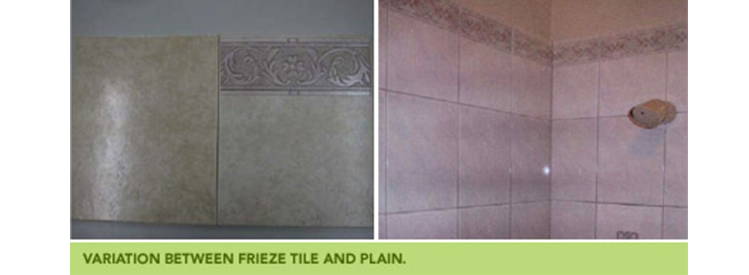
Some tiles have a pattern applied to a finished plain tile. Then, the tile is fired in the kiln for a second time. This process is called second firing. For very intricate patterns that include a number of colours or materials that are hand applied, the tile can be third or even fourth fired.
The complication is that some glazes actually react and change colour slightly on the second or third pass through the kiln. This can occur if kiln temperatures vary from firing to firing.
If the plain and patterned tiles do vary, we will always highlight these variations to our clients when a selection of tiles is being done.
If the difference in could between the plain and decorator tiles is obvious, the installer should make the customer aware of this before continuing to install the tiles.
• Some pattern and frieze tiles require a second or third pass through the kiln. When this happens, the body tile glazes can react and change colour slightly with each refiring.
• Each batch of tiles can be a different shade, or tonality, to the last production run. Because pattern tiles don't always sell in the same mix ratio to plain tiles, we may supply frieze tiles that are correct in every way, but not the exact same tonality or background shade. Our staff will have graded them as acceptable to mix, but you may not be prepared to accept them.
• Sometimes, we just mess up in the warehouse and send two batches of the same tile by mistake.
If you are not happy with the tiles, do not lay them. Call the Ranjanas Ceramic Branch from which you purchased the tiles and they will arrange to exchange the tiles that are not a good match for alternative ones.
If you are not satisfied with any of the replacements available, we can issue a credit on the returned tiles.
If the patterned frieze is suitable, but the background tile that it is applied to is not, then your tiler can cut the frieze from the body tile and install it as though it were a purpose made listello or strip tile.